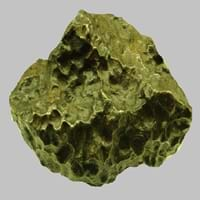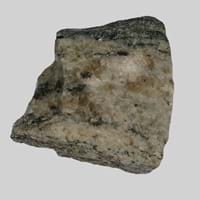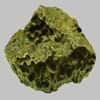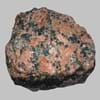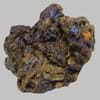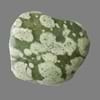Definition
Epidosite is a highly altered epidote and quartz bearing rock which is a type of metasomatite, essentially altered basalt
Litchfieldite is a rare igneous rock which is coarse-grained, foliated and a variety of nepheline syenite, sometimes also called as nepheline syenite gneiss or gneissic nepeheline syenite
Discoverer
Unknown
Bayley
Etymology
Not Available
From its occurrence at Litchfield, Maine, USA
Class
Igneous Rocks
Igneous Rocks
Sub-Class
Durable Rock, Medium Hardness Rock
Durable Rock, Medium Hardness Rock
Other Categories
Coarse Grained Rock, Fine Grained Rock, Opaque Rock
Coarse Grained Rock, Opaque Rock
Texture
Glassy, Massive, Porphyritic, Scoriaceous, Vesicular
Granular
Color
Black, Brown, Light to Dark Grey
Brown, Buff, Cream, Green, Grey, Pink, White
Durability
Durable
Durable
Scratch Resistant
Yes
Yes
Appearance
Dull and Soft
Banded and Foilated
Interior Uses
Decorative Aggregates, Floor Tiles, Homes, Hotels, Interior Decoration
Countertops, Decorative Aggregates, Flooring, Interior Decoration
Exterior Uses
As Facing Stone, Garden Decoration, Office Buildings, Paving Stone
As Building Stone, As Facing Stone, Garden Decoration
Other Architectural Uses
Curbing
Curbing
Construction Industry
As Dimension Stone, Cobblestones, Rail Track Ballast, Roadstone
As Dimension Stone, Cement Manufacture, Construction Aggregate, for Road Aggregate, Landscaping, Making natural cement, Manufacture of Magnesium and Dolomite Refractories, Production of Glass and Ceramics
Medical Industry
Not Yet Used
Not Yet Used
Antiquity Uses
Artifacts, Monuments, Sculpture, Small Figurines
Artifacts, Monuments, Sculpture
Commercial Uses
Commemorative Tablets, Creating Artwork
Creating Artwork
Types
Alkaline Basalt, Boninite, High Alumina Basalt, Mid Ocean Ridge Basalt (MORB), Tholeiitic Basalt, Basaltic trachyandesite, Mugearite and Shoshonite
Borolanite and Litchfieldite
Features
Has High structural resistance against erosion and climate, Very fine grained rock
Application of acids on the surface causes cloudy frosting, Available in Lots of Colors and Patterns, Dissolves in hydrochloric acid, Is one of the oldest rock
Archaeological Significance
Famous Monuments
Data Not Available
Data Not Available
Famous Sculptures
Data Not Available
Data Not Available
Formation
Epidosite is a fine-grained, hard rock which is a type of metasomatite, essentially altered basalt. It forms with or without crystallization, either below the surface as intrusive rocks or on the surface as extrusive rocks.
Litchfieldite is a fine-grained, hard rock which is a type of metasomatite, essentially altered basalt. It forms with or without crystallization, either below the surface as intrusive rocks or on the surface as extrusive rocks.
Mineral Content
Olivine, Plagioclase, Pyroxene
Albite, Amphibole, Biotite, Cancrinite, Feldspar, Hornblende, Plagioclase, Pyroxene, Sodalite
Compound Content
Aluminium Oxide, CaO, Iron(III) Oxide, FeO, Potassium Oxide, MgO, MnO, Sodium Oxide, Phosphorus Pentoxide, Silicon Dioxide, Titanium Dioxide
Aluminium Oxide, CaO, Iron(III) Oxide, FeO, Potassium Oxide, MgO, MnO, Sodium Oxide, Phosphorus Pentoxide, Silicon Dioxide, Titanium Dioxide
Types of Metamorphism
Burial Metamorphism, Cataclastic Metamorphism, Hydrothermal Metamorphism, Impact Metamorphism
Burial Metamorphism, Cataclastic Metamorphism, Contact Metamorphism, Impact Metamorphism
Types of Weathering
Biological Weathering, Chemical Weathering, Mechanical Weathering
Biological Weathering, Mechanical Weathering
Types of Erosion
Not Applicable
Coastal Erosion, Water Erosion, Wind Erosion
Grain Size
Fine to Coarse Grained
Coarse Grained
Fracture
Conchoidal
Conchoidal to Uneven
Streak
White to Grey
White
Porosity
Less Porous
Less Porous
Luster
Not Available
Greasy to Dull
Compressive Strength
Not Available
Cleavage
Not Available
Poor
Toughness
2.3
Not Available
Specific Gravity
2.8-3
2.6
Transparency
Opaque
Translucent to Opaque
Density
Not Available
2.6 g/cm3
Resistance
Heat Resistant, Pressure Resistant, Wear Resistant
Heat Resistant, Impact Resistant, Wear Resistant
Deposits in Eastern Continents
Asia
India, Russia
Not Yet Found
Africa
South Africa
South Africa
Europe
Iceland
Finland, Norway, Portugal
Others
Not Yet Found
Not Yet Found
Deposits in Western Continents
North America
Canada, USA
Canada
South America
Brazil
Brazil
Deposits in Oceania Continent
Australia
Not Yet Found
Not Yet Found
Epidosite vs Litchfieldite Characteristics
Though some rocks look identical, they have certain characteristics which distinguish them from others. Characteristics of rocks include texture, appearance, color, fracture, streak, hardness etc. Epidosite vs Litchfieldite characteristics assist us to distinguish and recognize rocks. Also you can check about Properties of Epidosite and Properties of Litchfieldite. Learn more about Epidosite vs Litchfieldite in the next section. The interior uses of Epidosite include Decorative aggregates, Floor tiles, Homes, Hotels and Interior decoration whereas the interior uses of Litchfieldite include Countertops, Decorative aggregates, Flooring and Interior decoration. Due to some exceptional properties of Epidosite and Litchfieldite, they have various applications in construction industry. The uses of Epidosite in construction industry include As dimension stone, Cobblestones, Rail track ballast, Roadstone and that of Litchfieldite include As dimension stone, Cement manufacture, Construction aggregate, For road aggregate, Landscaping, Making natural cement, Manufacture of magnesium and dolomite refractories, Production of glass and ceramics.
More about Epidosite and Litchfieldite
Here you can know more about Epidosite and Litchfieldite. The life cycle of a rock consists of formation of rock, composition of rock and transformation of rock. The composition of Epidosite and Litchfieldite consists of mineral content and compound content. The mineral content of Epidosite includes Olivine, Plagioclase, Pyroxene and mineral content of Litchfieldite includes Albite, Amphibole, Biotite, Cancrinite, Feldspar, Hornblende, Plagioclase, Pyroxene, Sodalite. You can also check out the list of all . When we have to compare Epidosite vs Litchfieldite, the texture, color and appearance plays an important role in determining the type of rock. Epidosite is available in black, brown, light to dark grey colors whereas, Litchfieldite is available in brown, buff, cream, green, grey, pink, white colors. Appearance of Epidosite is Dull and Soft and that of Litchfieldite is Banded and Foilated. Properties of rock is another aspect for Epidosite vs Litchfieldite. The hardness of Epidosite is 6 and that of Litchfieldite is 5.5-6. The types of Epidosite are Alkaline Basalt, Boninite, High Alumina Basalt, Mid Ocean Ridge Basalt (MORB), Tholeiitic Basalt, Basaltic trachyandesite, Mugearite and Shoshonite whereas types of Litchfieldite are Borolanite and Litchfieldite. Streak of rock is the color of powder produced when it is dragged across an unweathered surface. The streak of Epidosite is white to grey while that of Litchfieldite is white. The specific heat capacity of Epidosite is Not Available and that of Litchfieldite is Not Available. Depending on the properties like hardness, toughness, specific heat capacity, porosity etc., rocks are resistant to heat, wear, impact, etc.Epidosite is heat resistant, pressure resistant, wear resistant whereas Litchfieldite is heat resistant, impact resistant, wear resistant.
